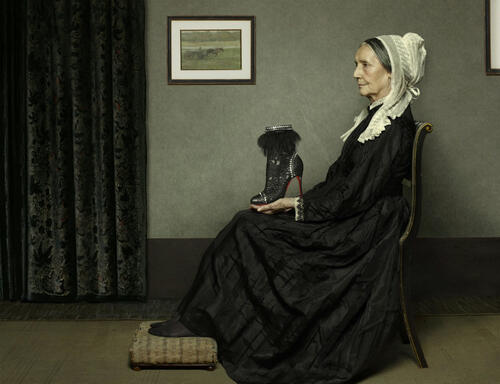
Remember when iconic shoe lover Carrie Bradshaw leaned in to look at a pair of Louboutin sandals and whispered, "Hello, Lover?" If she'd just stuck to her love affair with shoes instead of constantly chasing Mr. Big, she could've saved herself a lot of heartache.
Christian Louboutin seems to have had the same thought. When he paired up with photographer Peter Lippmann in 2011 for a series of images inspired by art history portraits, the women they documented were clearly infatuated with their red-bottomed shoes.
They all seem to be asking: "Who needs a man when you have Louboutins?"
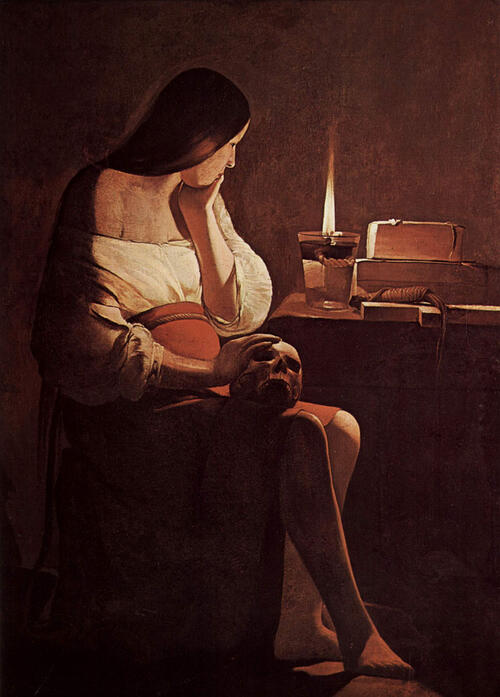
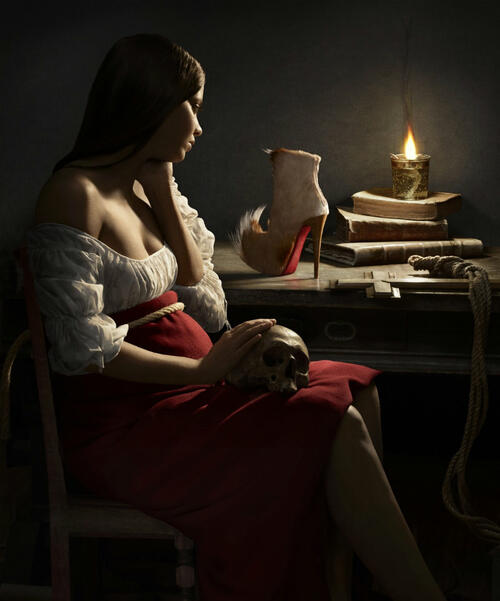 Magdalen with the Smoking Flame by Georges de la Tour is a somber image of a woman repenting her sins. In Louboutin's version, the only sin is spending so much money on shoes and modern Magdalen seems fairly #sorrynotsorry about that. Her only dark thought seems to be, "my feet are going to hurt at the end of the night, but isn't this shoe worth it?"
Magdalen with the Smoking Flame by Georges de la Tour is a somber image of a woman repenting her sins. In Louboutin's version, the only sin is spending so much money on shoes and modern Magdalen seems fairly #sorrynotsorry about that. Her only dark thought seems to be, "my feet are going to hurt at the end of the night, but isn't this shoe worth it?"
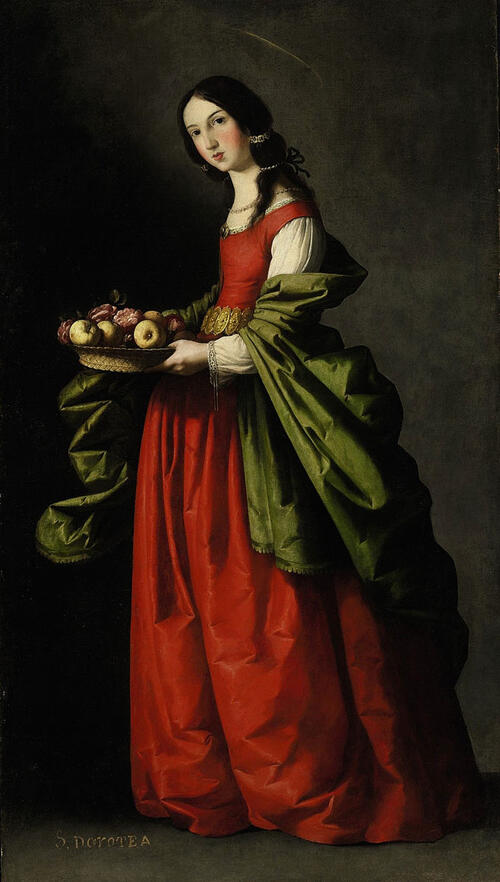
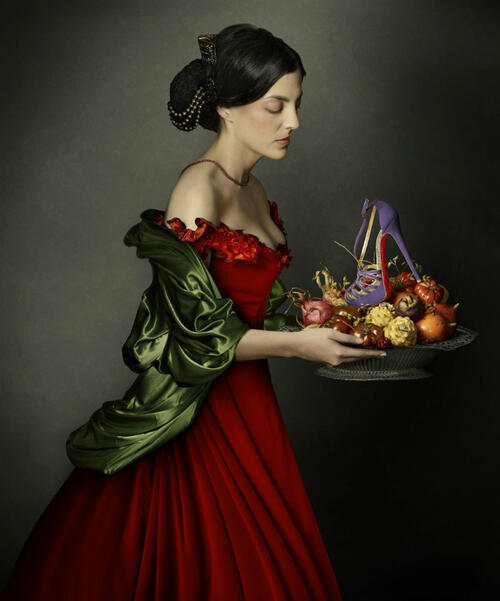 The most striking difference between Francisco de Zurbaran's Santa Dorotea and the Louboutin version is that the woman in the original looks out at the viewer while the modern woman only has eyes for the shoes on her plate. Her updo is more stylish, her dress is more flattering, but it's that long, tall heel that screams 21st century. Although one has to wonder, does she intend to wear it or shove it down someone's throat?
The most striking difference between Francisco de Zurbaran's Santa Dorotea and the Louboutin version is that the woman in the original looks out at the viewer while the modern woman only has eyes for the shoes on her plate. Her updo is more stylish, her dress is more flattering, but it's that long, tall heel that screams 21st century. Although one has to wonder, does she intend to wear it or shove it down someone's throat?
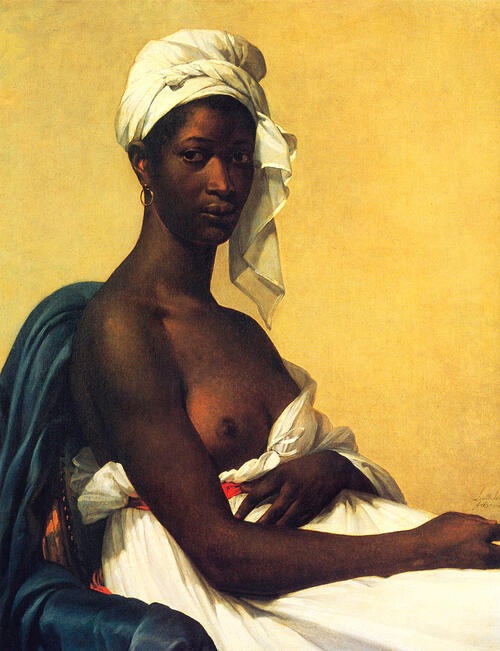
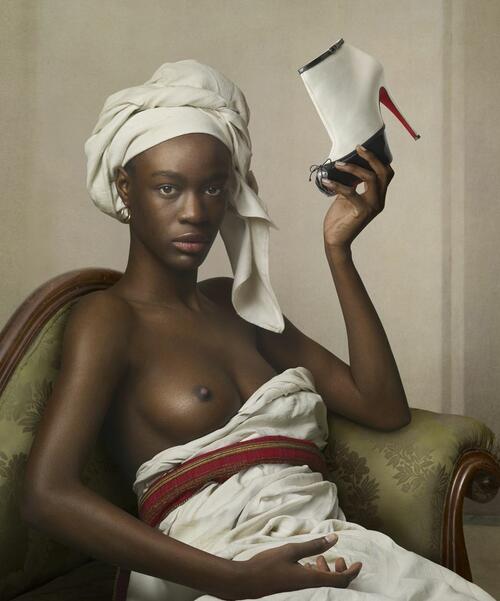 The original painting of Portrait of a Negress by Marie Guillemine-Benoist is almost perfect. The woman stares out at the viewer, breast bared, symbolizing strength and beauty. (Fun fact: It was featured in a Beyonce / Jay-Z video.)
The original painting of Portrait of a Negress by Marie Guillemine-Benoist is almost perfect. The woman stares out at the viewer, breast bared, symbolizing strength and beauty. (Fun fact: It was featured in a Beyonce / Jay-Z video.)
Louboutin and Lippman know better than to mess with perfection. They staged their image to match the original nearly identically, with a more flattering chair for the background and the addition of shoe in hand. It was a wise choice in creative restraint not to force the shoe to take center stage on this one. The woman is the star. The shoe, rightfully, is an accessory.
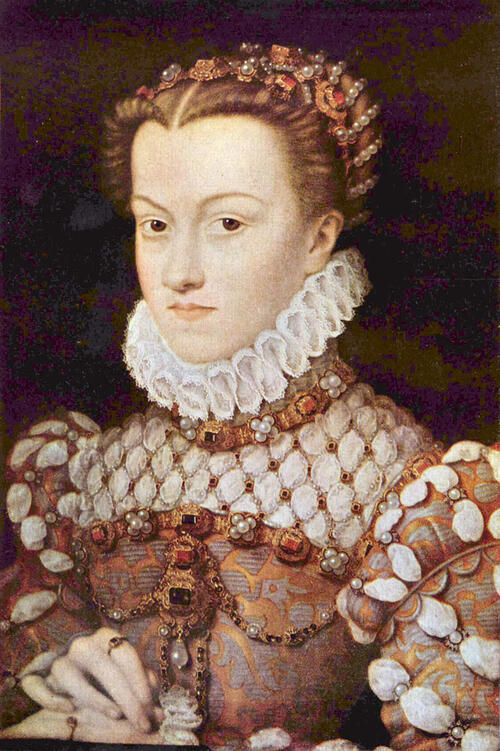
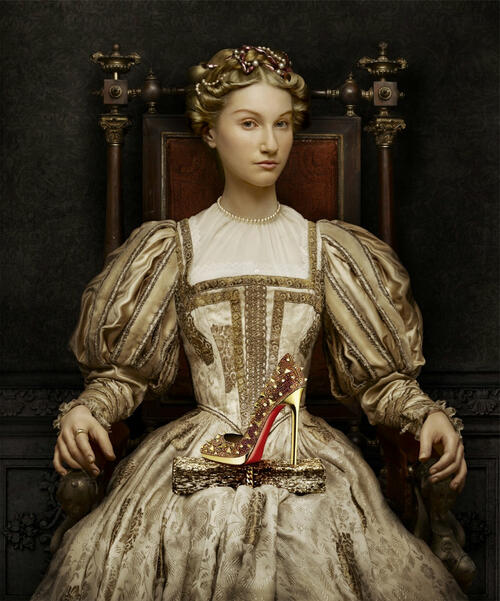 On the other hand, the shoe is everything in the recreation of Elisabeth of Austria, Queen of France by Francois Clouet. In the original, you see only the queen's bust in a dress overflowing with gaudy embellishments. In the Louboutin version, the dress is nice, but not so noticeable, because all you're looking at is the shoe on the contemporary queen's lap.
On the other hand, the shoe is everything in the recreation of Elisabeth of Austria, Queen of France by Francois Clouet. In the original, you see only the queen's bust in a dress overflowing with gaudy embellishments. In the Louboutin version, the dress is nice, but not so noticeable, because all you're looking at is the shoe on the contemporary queen's lap.
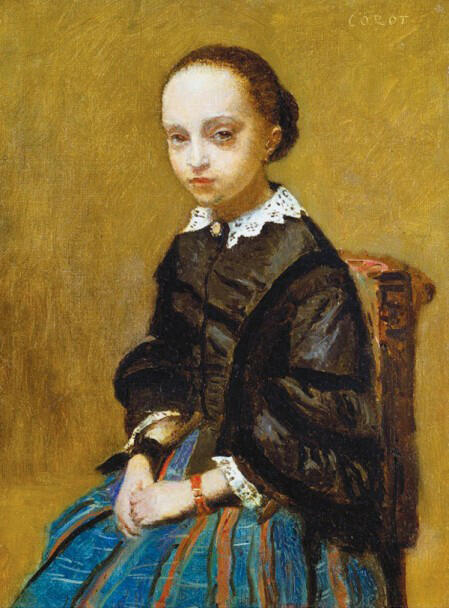
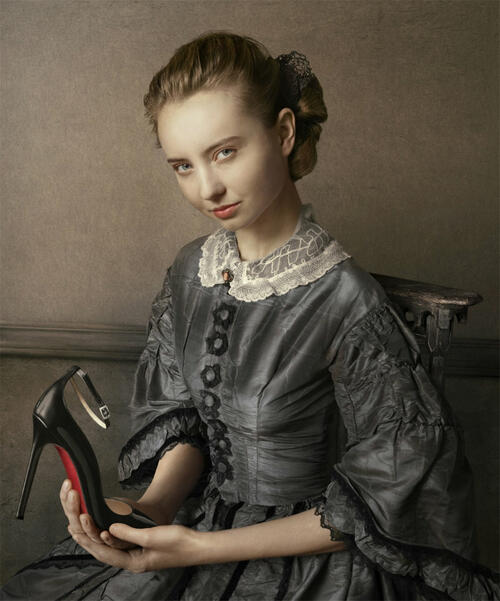 Portrait of a Girl isn't one of Jean-Baptiste Camille Corot's sexiest paintings (thankfully, since the girl is so young). However, it does have an interesting story since a few years back the FBI had to get involved when it went missing and then was discovered to be part of a big wire fraud case that sent an art scammer named Thomas Doyle to prison.
Portrait of a Girl isn't one of Jean-Baptiste Camille Corot's sexiest paintings (thankfully, since the girl is so young). However, it does have an interesting story since a few years back the FBI had to get involved when it went missing and then was discovered to be part of a big wire fraud case that sent an art scammer named Thomas Doyle to prison.
Louboutin's Girl has a sneaky look in her eye that makes it seem as though she would have been in on the scam, perhaps trying to garner enough money to pay for the red-bottomed beauty in her hands.
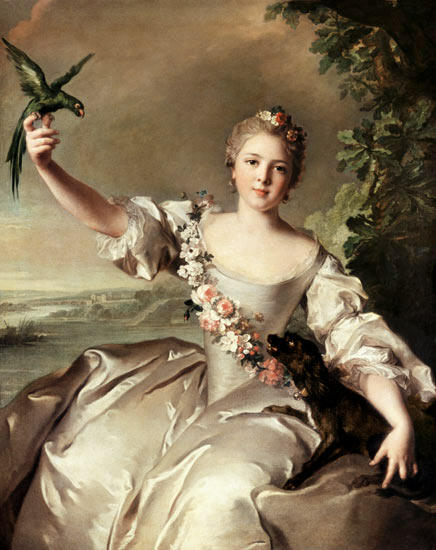
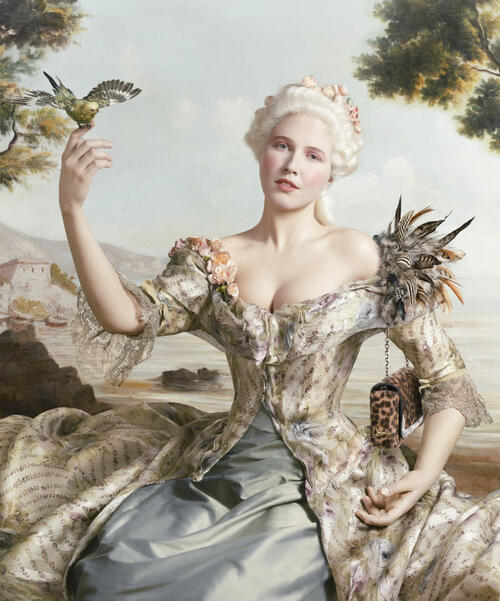
In the Marquise D’Antin image by Jean-Marc Nattier, a vicious looking bird seems poised to fight with a feisty little lap dog. Who needs all of that interspecies drama? Louboutin and Lippman ditched the dog, replaced it with a purse, and the bird seems infinitely happier.
And can we just point out that Louboutin and his stylists have out-Rococo'd Nattier, the master of that elaborate ornamental style? The modern dress makes the original look plain and simple.
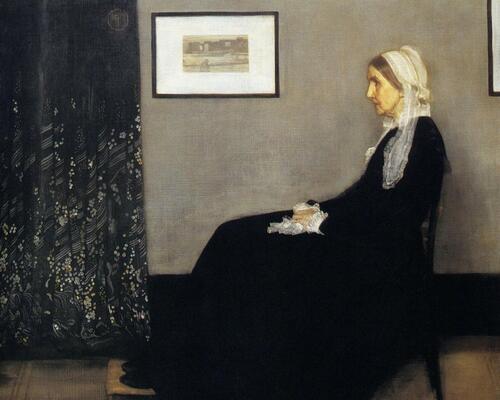
Nobody's ever accused James Abbott McNeill Whistler of making his mother look sexy. In Arrangement in Grey and Black No. 1 she mostly looks tired. But this isn't Louboutin's mother so there's nothing wrong with him taking a look at this older lady and seeing the potential for sex appeal. She have her feet up for a rest but only because she's been dancing in those fringed, heeled, red-bottomed booties all night long.









